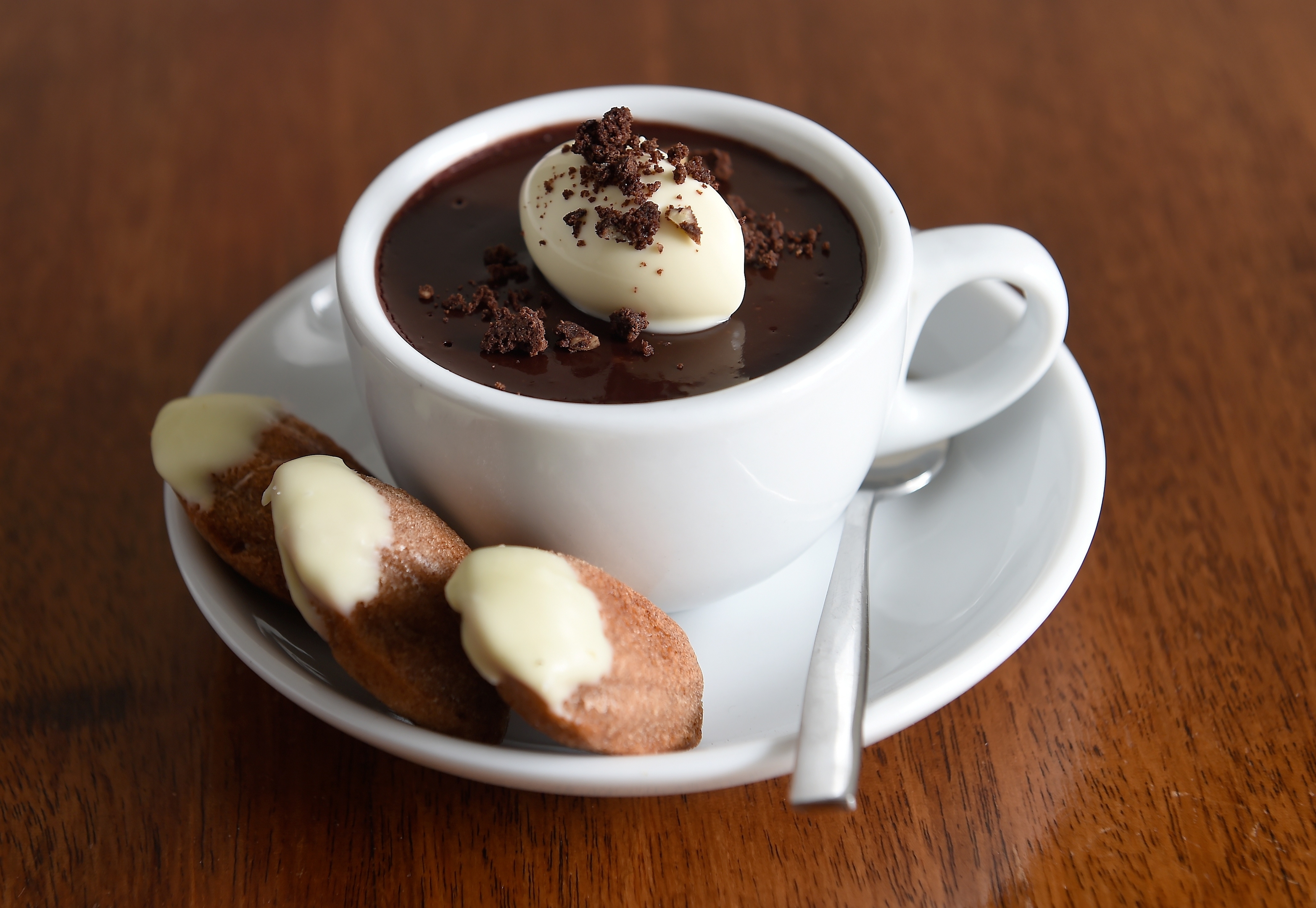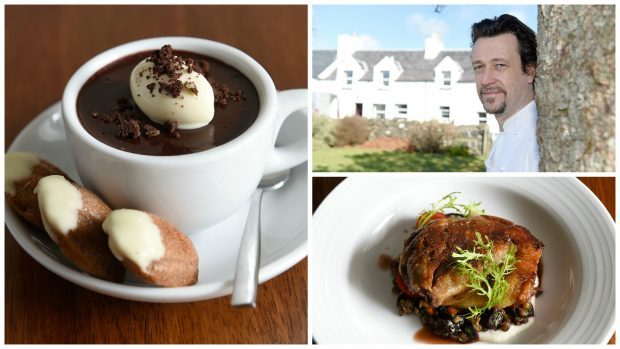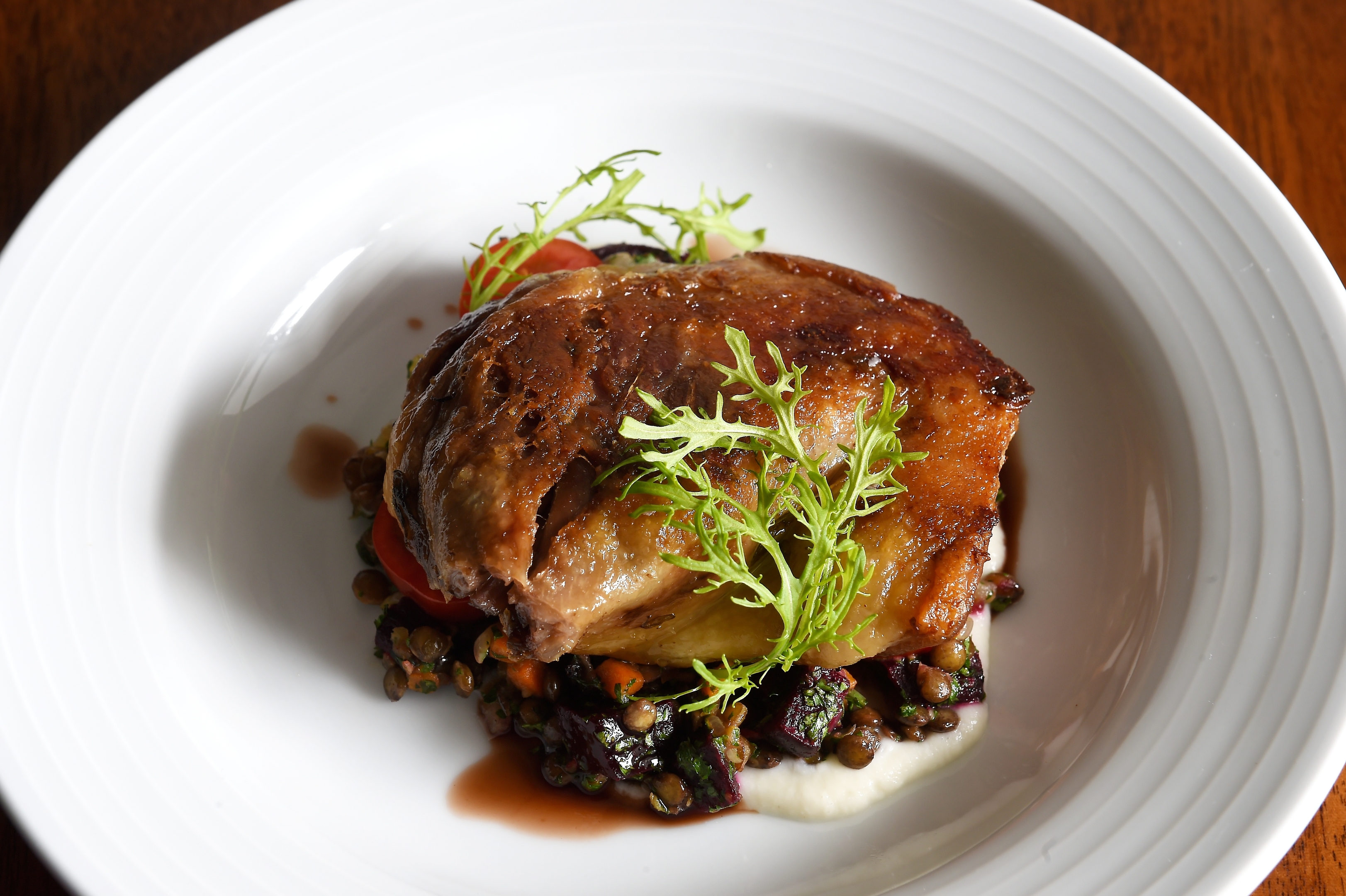Duck has become relatively inexpensive and you can see it for sale everywhere these days.
Cooking it confit style – which means cooking it in its own fat – results in a very substantial, comforting, savoury and classic dish.
Another benefit of making a confit is that it is an excellent method of preservation as the fat seals in all the flavour and makes it rich and air-tight so once cooked, the duck can be kept in the fridge for a few days and still taste fresh.
Any surplus fat which comes out while cooking can be used to roast potatoes – potatoes cooked in duck fat taste fantastic! While the recipe is a classic French dish and often served in restaurants, it is simple to make at home and will hopefully inspire more of us to eat more duck in 2017.
Today’s dessert is a delicious sweet treat, Madeleines – little sponge cakes which can be dipped in white chocolate before being eaten. These can be prepared in advanced and kept in the fridge, just remember to bring them slowly back to room temperature before serving.
With Little Chocolate Pots, it might be tempting to skimp on the chocolate but these taste much better when served with a quality chocolate, so check the label and make sure you buy chocolate with a high cocoa content.
Duck leg confit with braised lentils
SERVES 2
2 duck legs
50g sea salt (flaky works best)
1 small bunch thyme, roughly chopped
1 rosemary branch, roughly chopped
1 whole garlic bulb, roughly chopped
250g goose or duck fat, or enough to totally submerge the duck legs
2 bay leaves
1 tsp black peppercorns
Mix the salt, herbs and garlic together to make the marinade. Rub this really well into the duck legs in a bowl, cover with cling film and refrigerate overnight. Next day, heat oven to 150C/130C fan/ gas 2. Wipe the duck with kitchen paper and pat dry, but don’t wash off the marinade. (The salt extracts the water from the meat cells, which will be re-inflated with fat as the duck cooks gently. If you wash it, you will simply re-inflate the cells with water.)
Put the duck in a cast-iron casserole and cover with the goose fat or duck fat. Add the bay leaves and peppercorns and cook for about two and a half hours or until the meat is almost falling away from the bone. You can store the duck very simply by placing it in a pudding bowl, covering it with the fat and keeping it in the fridge: as long as it stays covered with fat it will last for weeks.
To cook, remove the confit duck legs from their fat. Put an ovenproof frying pan on the stove until it is hot. Add the duck legs, skin-side down, and cook for four minutes. Turn the legs and transfer the pan to the oven for 30 minutes, until crisp.
Braised lentils
3 tbsp rapeseed oil
1 red onion, chopped
1 large carrot, chopped
3 slices streaky bacon, chopped (optional)
1 stalk celery, sliced
300g puy lentils, rinsed
2 sprigs thyme
3 cups chicken or vegetable stock (heated)
Salt and freshly ground black pepper
Heat the olive oil in a large frying pan or saucepan. Add the onion, carrot, bacon and celery and cook, stirring occasionally, for about five minutes or until the onion is starting to soften. Add the lentils, stirring to coat with oil and then add the thyme and hot stock. Bring to the boil, then reduce the heat and simmer for 15-20 minutes or until the lentils are tender. Season to taste with salt and pepper and drizzle with extra rapeseed oil prior to serving alongside the duck confit.
Little chocolate pots

SERVES 4
250ml whipping cream
100ml whole milk
150g dark chocolate, about 85% cocoa
40g dark muscovado sugar
3 egg yolks
Slowly bring the cream and milk to a simmer in a smallish pan. Meanwhile coarsely chop the chocolate or, more satisfyingly, whack it, still in its packaging, several times against a hard surface.
Put the sugar and yolks in a medium heatproof bowl. Whisk them, preferably with electric beaters if you have them, until pale and voluminous. Add the chocolate to the pan and remove from the heat. Allow it to sit for a minute, then stir vigorously until the mixture is an even brown colour and the chocolate has all melted.
Pour the hot chocolate cream on to the yolks and sugar, whisking vigorously as you do so. Divide between ramekins and allow to cool completely. Cover and chill for at least an hour before serving.
Cinnamon and white chocolate madeleines
The madeleines are best served warm, so bake them up to a day ahead, then reheat gently in a low oven. Or make them up to the end of step five a few hours ahead, keep the mix in the fridge and bake when needed. Any leftover madeleines will keep well in the freezer.
75g unsalted butter, plus extra for greasing
50g self-raising flour, plus extra for dusting
1 tsp ground cinnamon
50g ground almonds
2 medium eggs
100g light muscavado sugar
100g white chocolate, melted
Preheat the oven to 200C, fan 180C, gas 6. Grease the holes of a 12-hole nonstick madeleine tin with butter and dust them with flour, then tap the tin over the sink to get rid of the excess flour. Melt the 75g butter, then set aside to cool slightly. Sift the flour, the baking powder and ground cinnamon into a mixing bowl with a pinch of salt, then stir in the ground almonds.
Then, in another bowl and using an electric hand whisk, whisk the eggs and sugar together on high speed for five minutes. Pour half the melted butter into the egg mix and add half the flour mix too. Using a large metal spoon, fold together. Then repeat with the rest of the ingredients. At this stage the mix can be kept in the fridge for a week before baking.
To bake: Using half the mixture, fill the holes of the tin and bake the madeleines for 8-10 minutes until lightly golden. Leave the cooked madeleines in the tin for a couple of minutes, then remove them and transfer them to a wire rack. Wash and dry the tin, then re-butter and re-dust it with flour and bake the second batch. Once cooled, dip the madeleines into the melted chocolate and allow to set.

